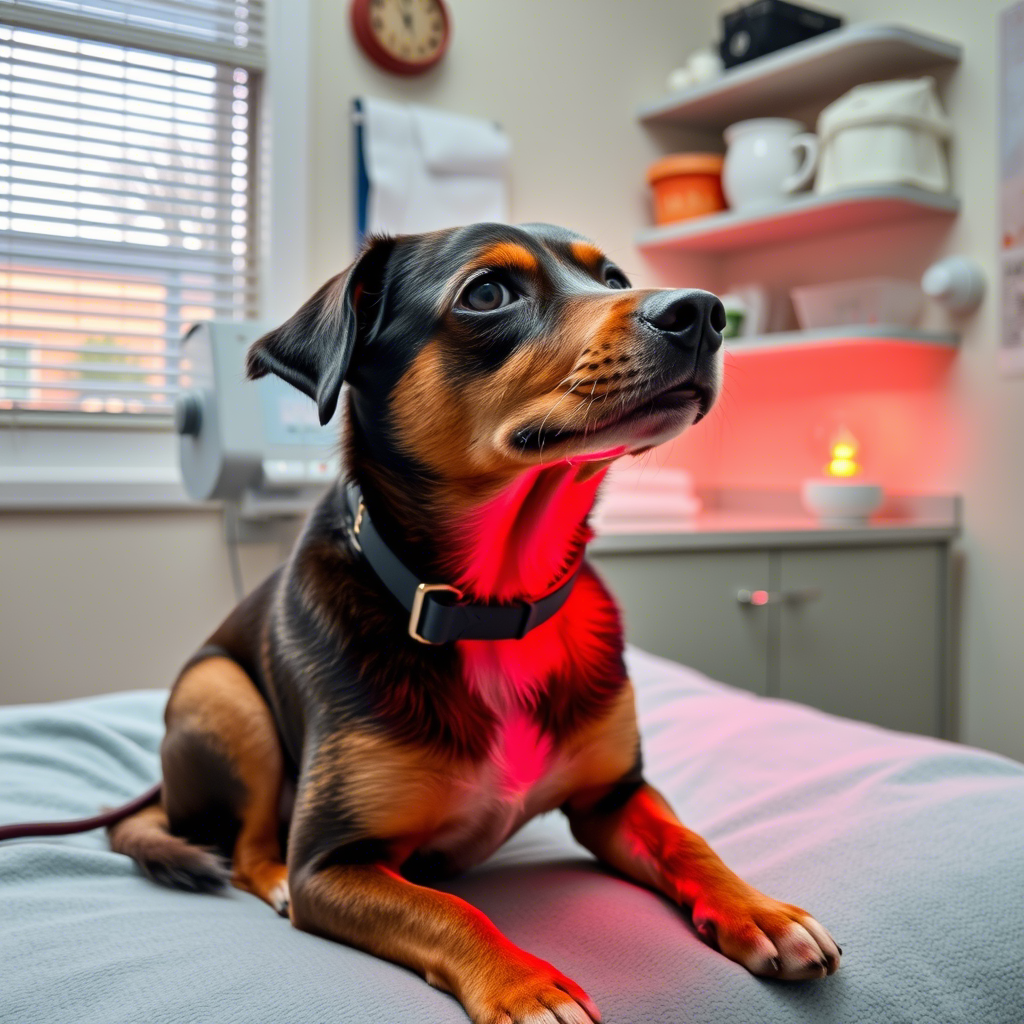VET Light Therapy represents a significant advancement in veterinary care, offering a non-invasive, effective, and safe treatment modality for a range of conditions.
VET Light Therapy
VET Light Therapy English
VET Light Therapy, also known as Low-Level Laser Therapy (LLLT) or Photobiomodulation (PBM), is a non-invasive treatment that uses light to promote healing, reduce pain and inflammation, and improve tissue repair in animals. This therapy has gained significant attention in veterinary medicine due to its effectiveness and safety. The use of specific wavelengths of light can stimulate cellular processes, enhancing the body's natural healing mechanisms. As a result, VET Light Therapy has become a valuable tool in veterinary care, offering a range of benefits for animals suffering from various conditions.
Benefits of VET Light Therapy
VET Light Therapy offers numerous benefits for animals, including pain relief, reduced inflammation, and accelerated wound healing.
- Pain Relief: Studies have shown that LLLT can significantly reduce pain in animals by stimulating the release of pain-relieving chemicals and reducing inflammation. For example, a study on dogs with osteoarthritis found that LLLT significantly improved their quality of life by reducing pain and improving mobility.
- Reduced Inflammation: The therapy can decrease inflammation by promoting the removal of inflammatory mediators and enhancing the healing process.

- Accelerated Wound Healing: By enhancing collagen synthesis, improving tissue oxygenation, and promoting angiogenesis, VET Light Therapy can significantly accelerate the wound healing process. A case study on a horse with a non-healing wound demonstrated complete healing after several sessions of LLLT.
Applications of VET Light Therapy
The applications of VET Light Therapy are diverse, ranging from treating musculoskeletal disorders to managing post-surgical recovery.
- Musculoskeletal Disorders: Conditions such as arthritis, tendonitis, and ligament sprains can be effectively managed with LLLT. For instance, a study found that LLLT reduced pain and improved function in dogs with hip osteoarthritis.
- Wound Management: As mentioned, LLLT is beneficial for wound healing.

- Post-Surgical Recovery: The therapy can be used post-operatively to reduce pain, inflammation, and promote healing. A veterinary clinic reported faster recovery times and reduced post-operative pain in animals treated with LLLT after surgery.
How VET Light Therapy Works
The mechanism behind VET Light Therapy involves the absorption of light by cells, which triggers a cascade of cellular responses.
- Cellular Absorption: Light is absorbed by chromophores within cells, leading to increased ATP production, which enhances cellular metabolism and function.
- Biological Responses: The increased ATP production triggers various biological responses, including the release of growth factors, reduction of inflammatory cytokines, and stimulation of cellular proliferation.
- Tissue Repair: The overall effect is enhanced tissue repair and healing, as seen in the case of a canine undergoing red light therapy in a veterinary clinic.

Equipment and Treatment Protocols
The effectiveness of VET Light Therapy depends on the appropriate use of equipment and adherence to treatment protocols.
- Device Selection: Choosing the right device with the appropriate wavelength and power density is crucial. For more information on selecting the right medical devices, visit https://medicalexport.net/category/medical-devices/.
- Treatment Protocols: Treatment protocols vary depending on the condition being treated, including the duration and frequency of sessions. A typical treatment might involve several sessions per week over a few weeks.
- Safety Precautions: Ensuring the safety of both the animal and the operator is paramount. This includes proper training and following manufacturer guidelines. For specific products, such as those used in VET Light Therapy, one can explore options at https://medicalexport.net/products/.
Future Directions and Research
The field of VET Light Therapy is continually evolving, with ongoing research exploring new applications and optimizing treatment parameters.
- New Applications: Research is expanding the use of LLLT to new areas, such as neurological conditions and dermatological disorders.
- Optimization of Parameters: Studies are focused on determining the most effective wavelengths, dosages, and treatment protocols for various conditions.
- Mechanistic Studies: Further research into the mechanisms underlying LLLT will help in understanding its effects and improving its applications.
Conclusion
VET Light Therapy represents a significant advancement in veterinary care, offering a non-invasive, effective, and safe treatment modality for a range of conditions. By understanding its benefits, applications, and mechanisms, veterinarians can provide better care for animals. As research continues to uncover the full potential of LLLT, its role in veterinary medicine is likely to expand. By staying informed about the latest developments and incorporating VET Light Therapy into their practice, veterinarians can improve outcomes for their patients.
